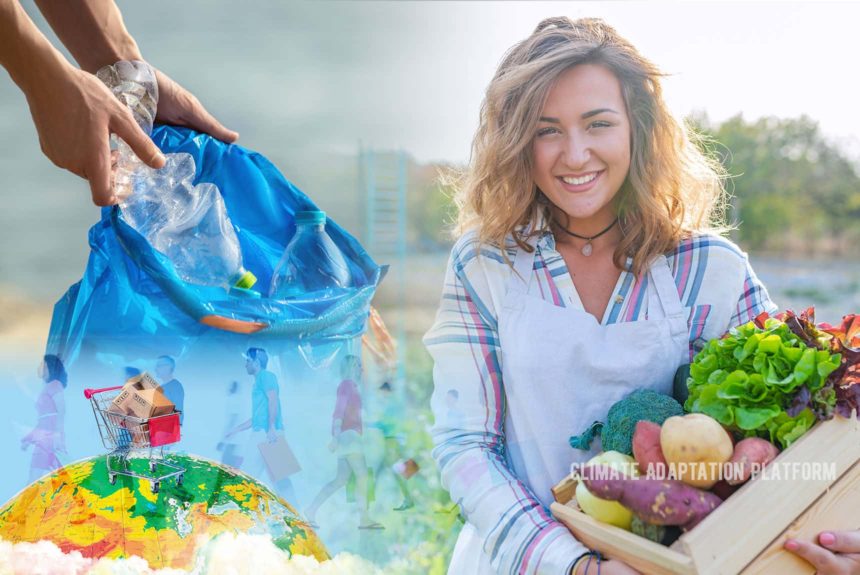The IPCC AR6 Working Group III Mitigation of Climate Change warns that global GHG emissions would need to peak within three years or until 2025 to prevent the worst impacts of climate change.
After 2025, global GHG emissions will need to fall fast, hitting net-zero by 2050, requiring a “rapid, deep, and immediate” cut in carbon dioxide (CO2) emissions, the report says.
A prediction that sets the world to warm by 3.2°C by 2100 will create “unprecedented heatwaves, terrifying storms, and widespread water shortages”.
The report says that avoiding this catastrophe will require us to keep the temperature rise within or under 1.5°C this century.
Achieving this temperature rise limit is still possible, says UN Chief Antonio Gutteres, in what he calls a “viable and financially sound manner” (McGrath, 2022).
However, this will entail enormous shifts in energy production, transport, industry, our consumption patterns and how we treat the environment.
The next few years will be critical, according to the report, because if we fail to curb emissions by 2030, then it will be impossible to limit warming later this century.
Aside from the changes required from the usual suspects – the high-emitting industries like energy production, fossil fuel plants, production, and developments, our lifestyle and diets offer a high potential to slash our global CO2 emissions.
How can government encourage lifestyle and consumption patterns to help curb carbon dioxide emissions?
IPCC co-chair Priyadarshi Shukla says, “Having the right policies, infrastructure, and technology to enable changes to our lifestyles and behaviour can result in a 40-70% reduction in greenhouse gas emissions by 2050 (McGrath, 2022).
She added that this offers significant untapped potential and the evidence also shows that these lifestyle changes can improve our health and wellbeing (McGrath, 2022).
On the ground, this means that governments need to build infrastructure that will encourage more walking, cycling, and the use of electric vehicles. Other ways include planting more trees, cutting down on deforestation, increasing renewable energy production, and changing farming practices.
An eco-friendly lifestyle promoted by the IPCC report includes working from home, driving less, and adopting a vegetarian diet could slash emissions by 70% by 2050.
While this lifestyle and sustainable living are associated with the rich, this is far from the truth. This behavioural shift means breaking the status quo.
For example, instead of driving a car as a status symbol or buying an EV, we can opt to take public transport. This idea assumes that the government has invested well in mass public transport.
Eating a more plant-based diet means reducing meat consumption and buying local and seasonal produce, which costs less, is more nutritious, and is better for the environment. Buying frozen fruits and vegetables is more affordable and reduces food waste.
The Circular Consumer article, “Is Sustainable Living Reserved for the Rich?” explains sustainable living. It “isn’t about having all the eco-conscious products or showing off your best eco-life to your peer”. “Instead, it’s about minimizing our environmental footprint, protecting nature and being conscious consumers”, the article says.
Sustainable living is when “we unplug from consumerism – buy less, reuse or repurpose products and sell items we don’t need. This lifestyle choice is also an effective way to reduce our environmental footprint and protect nature – the real reason behind sustainability” (Is Sustainable Living, 2021).
The article suggests sustainable living tips, including preparing meals in batches, packing lunches, and buying in second-hand shops. However, it added a shift in our mindsets beyond the external behavioural changes that steer from mainstream consumerism or the “retail therapy” that “western culture worships”.
Even the rich are catching up. Hoffower’s article, “The latest status symbol is showing off your eco-friendly lifestyle”, mentions that since 2007, there has been a behavioural shift in the top 1% by spending less on material goods; instead, they invest significantly more on education, retirement, and health. Some are ditching “overt materialism” as a status symbol as they evolve towards “eco-consciousness.”
More people will make eco-friendly lifestyle changes regardless of socio-economic status to mitigate and adapt to climate change because our planet will benefit more from this collective change.
Sources:
McGrath, M. (2022, April 5). Climate change: IPCC scientists say it’s ‘now or never’ to limit warming. BBC. Retrieved from https://www.bbc.com/news/science-environment-60984663
Hoffower, H. (2022, April 12). The latest status symbol is showing off your eco-friendly lifestyle. Insider. Retrieved from https://www.businessinsider.com/united-nations-eco-friendly-status-symbol-climate-change-cars-vegetarians-2022-4
Is Sustainable Living Reserved for the Rich? (2021, May 3). The Circular Consumer. Retrieved from https://thecircularconsumer.com/is-sustainable-living-reserved-for-the-rich/



Leave a Reply